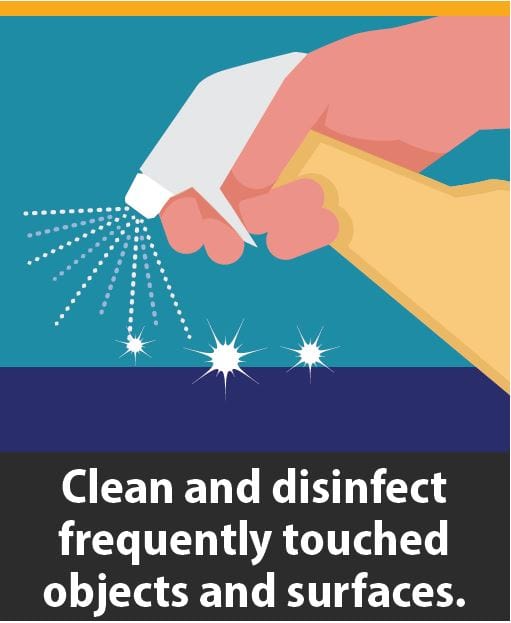
Due to COVID-19, there is a real-time shift with Nonahood businesses as some stores are still temporarily closed, whereas others are now empty storefronts. Fortunately, some establishments have found a path for re-opening while balancing the safety of their employees and the public. The measures taken to safely re-open these businesses vary, with some using Centers for Disease Control and Prevention (CDC) guidelines and others taking a more proactive approach that goes beyond the minimum guidelines. The safety of both employees and the public is crucial when re-opening a business or a facility.
Generally, part of my job as an occupational health and safety scientist is evaluating a hazard (e.g., chemical or biological) and determining if exposure to it is harmful to people’s health. If something is determined to be harmful, I investigate ways to reduce exposure to that hazard. Relating to the current pandemic, public health officials have identified that exposure to SARS-CoV-2 (the virus that causes COVID-19) can be harmful to people’s health. When something is identified as potentially harmful, methods to reduce exposure to that substance are evaluated and established. For COVID-19, public health agencies have recommended masks and social distancing as ways to reduce exposure to the virus.
As many of us have experienced firsthand, reducing exposure to the virus for both employees and customers at local businesses can prove to be difficult. While masks and social distancing have been the two main methods for controlling exposure to the virus, they rely on user compliance to be effective. Generally, using one method to reduce exposure does not negate the other. That is, use of a mask does not mean you should no longer social distance. Too many times, I have seen a mask-wearing individual entering the personal space of another individual, presumably thinking that they do not need to distance themselves if they are wearing a mask. A combination of multiple preventative measures should consistently be used as the best strategy for reducing exposure to the virus.
Many businesses have decided to perform enhanced cleaning and disinfecting within a facility. Establishing a workplace protocol for this process is an effective way of ensuring that a facility is routinely cleaned/disinfected. At a minimum, this protocol should include an evaluation of different work zones within a building, an inventory of high-touch areas, and a routine cleaning schedule, with more frequent cleaning in areas people contact often. The protocol should also outline the disinfecting products approved for use in the building. For safety, it is important to use only EPA-approved disinfectants and apply them per the approved method included on the product label – and using appropriate PPE. Applying a disinfectant using a non-approved method can be harmful to the applicator as well as any employees or customers in the building.
Using enhanced ventilation techniques in a building may reduce exposure to aerosols generated when we breathe, cough, sneeze or talk. However, despite the emerging science, these methods have yet to see wider adoption. Generally, a combination of enhanced filtration in heating, ventilation and air conditioning (HVAC) systems and increasing the air recirculation within a room may reduce exposure to aerosols. Consult a mechanical engineer or an industrial hygienist with relevant knowledge before using any ventilation control methods to ensure that they are safely and effectively implemented for exposure control within the building.
Some facilities are using technology in an attempt to control exposure, with either novel devices to clean the air or devices to apply a disinfectant in a room, using novel techniques. These treatment devices attempt to target the virus but may unintentionally create a new indoor hazard. If using these treatment technologies in occupied spaces, the end user (i.e., business owners and operators) need to fully understand the potentially hazardous nature of what they are using. Any technology that introduces a chemical or substance into the air may be introducing a new hazard into the occupied space where employees or the public may be exposed. If using this type of technology, an occupational health and safety professional should perform an independent evaluation to determine if the exposure may be harmful for occupants.
There are practical steps that Lake Nona businesses can take for customers to safely patronize local establishments. The use of additional control methods beyond the minimum can aid in making your business a safer place for employees and customers. However, use caution when utilizing a technology device that is presented as a chemical air or room cleaner.

Alex LeBeau, PhD, MPH, CIH, is the owner of Exposure Assessment Consulting, LLC, located in the Lake Nona area, offering toxicology, industrial hygiene, risk assessment, and public health consulting services. He has co-authored COVID-19 industry guidance and has been invited to speak to organizations on effective ways to reduce exposure to COVID-19 and other hazards.


